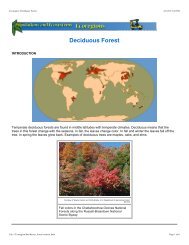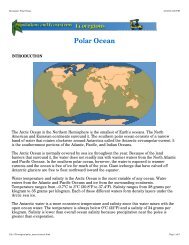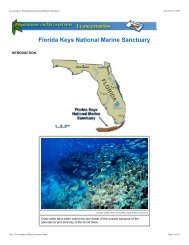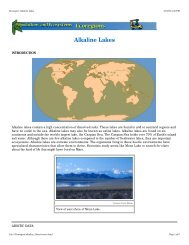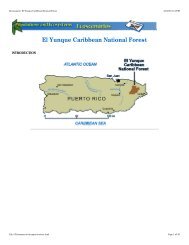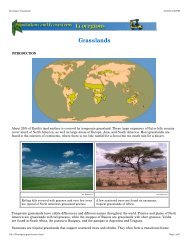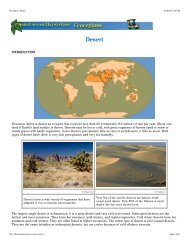Ecoscenarios Combined - FOSSweb
Ecoscenarios Combined - FOSSweb
Ecoscenarios Combined - FOSSweb
You also want an ePaper? Increase the reach of your titles
YUMPU automatically turns print PDFs into web optimized ePapers that Google loves.
Ecoscenario: Florida Keys National Marine Sanctuary<br />
4/16/03 3:17 PM<br />
Courtesy of William Harrigan, Florida Keys National<br />
Marine Sanctuary<br />
Careless snorkelers can<br />
damage and break fragile<br />
coral by standing on or leaning<br />
against the reef.<br />
Courtesy of Florida Keys National Marine Sanctuary<br />
Signs posted near popular snorkeling<br />
sites, dive boats, and piers remind divers<br />
to be careful near coral.<br />
Courtesy of William Harrigan, Florida Keys National<br />
Marine Sanctuary<br />
Even a light touch can destroy<br />
the soft-bodied coral polyps<br />
living in their hard skeletons.<br />
Divers and snorkelers are drawn to the beauty and diversity of coral reefs worldwide. The climate and location is<br />
perfect for many recreational activities that humans seek. Warm, shallow water is ideal for swimming, snorkeling,<br />
diving, fishing, and boating. Many casual visitors are not aware of the dangers that these activities pose for the<br />
ecosystem.<br />
Courtesy of Harold Hudson, Florida Keys National Marine Sanctuary<br />
A motorboat prop can tear up sea grasses in<br />
shallow lagoons.<br />
Courtesy of Paige Gill, Florida Keys National Marine Sanctuary<br />
A diver inspects the damage caused by a<br />
boat's keel grounded on a reef.<br />
Coral reef ecosystems have survived changes in sea level, ice ages, and periods of mass extinction on land.<br />
However, the current rate of damage is a serious global threat to coral reefs. Over one-half of the world's reefs are at<br />
high or moderate risk from human disturbance. A result of this disturbance is damage or death of the corals. This<br />
often leads to a syndrome where corals become diseased or bleached.<br />
In the 1980s, people noticed widespread damage and bleaching of coral reefs. This occurred not only in places with<br />
lots of human traffic, but in undisturbed areas. Some coral reefs showed extensive damage. In the Indian Ocean<br />
90% were damaged in a single year. In the Caribbean the reefs have the lowest total cover of living coral.<br />
file:///Ecoscenario/flakeys/content.html<br />
Page 12 of 18



